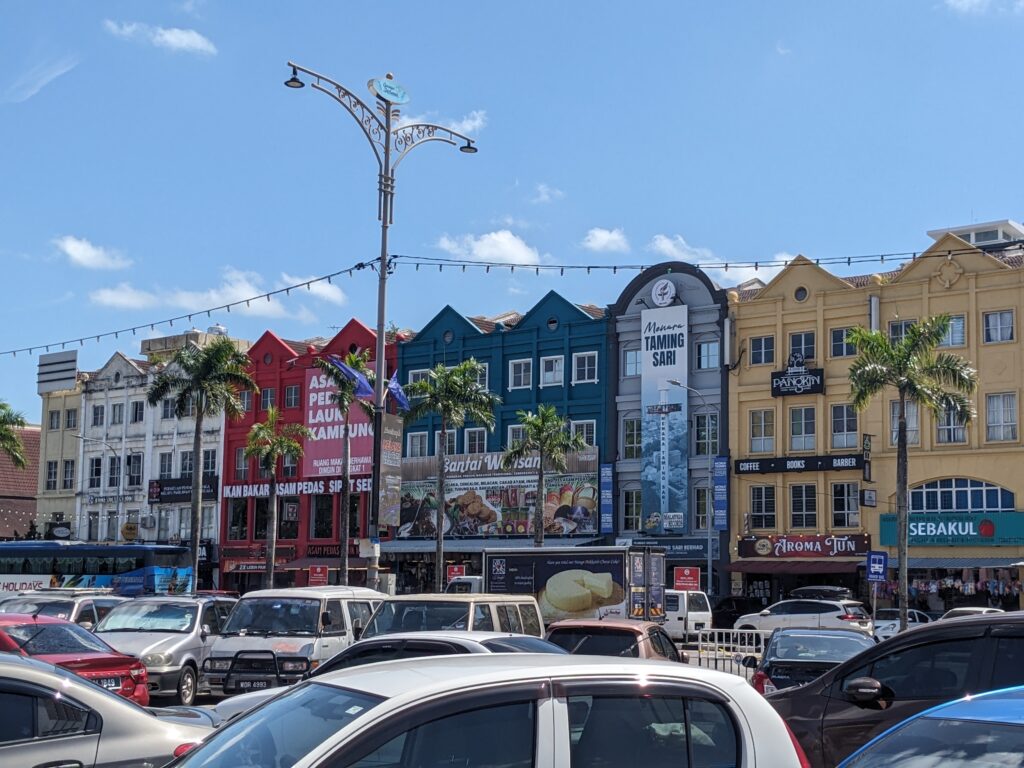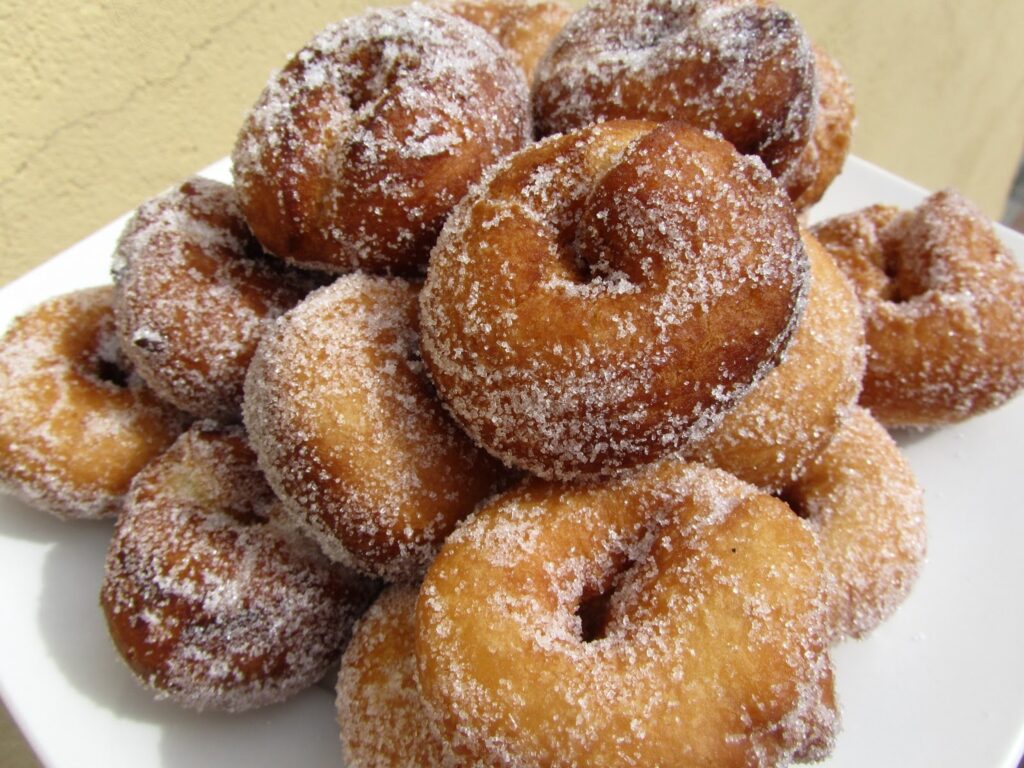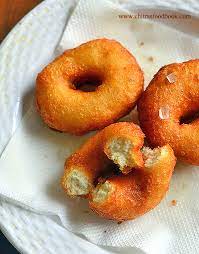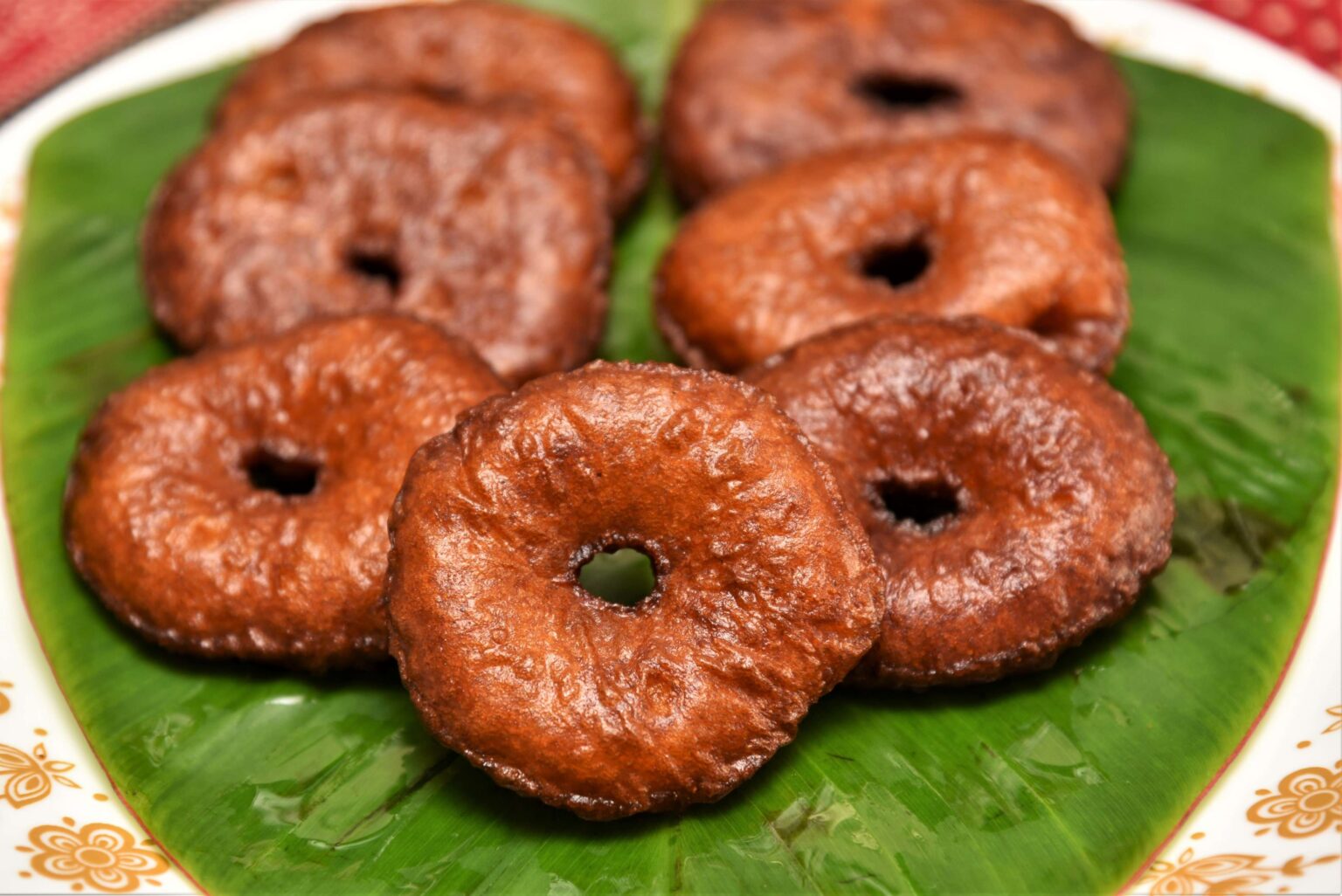Kuih Keira Gula Melaka
Before Dunkin Donuts and other western donut chains came to invade Malaysia’s cuisine, there was Kuih Keira, a local version of the ‘Donut’.
Fact File
Name:
Origin:
Popular in:
Complexity:
Flavor Profile:
Notable Ingredients:
Popularity:
Kuih Keria/Kuih Gelang/Donut Kampung
Debated/Mixed
Melaka
Easy
Sweet and slightly bitter
Sweet potato (keledek in Malay), Gula Melaka (Palm sugar)
Popular in homes and food stalls
Kuih Keria and its Cousins Around the World
Also known as Kuih Keria Gula Melaka, this delicacy is a type of donut made by deep frying a sweet potato ringed batter followed by a generous glazing of Gula Melaka (palm sugar). The palm sugar gives it a smokey caramel finish, providing a darker look and a slight bitter aftertaste. Often, orange sweet potatoes are used but variations exist using purple sweet potatoes as well. The sweet potatoes are boiled and mashed. Then, some flour is added to give the kuih its fluffiness. Once the batter is made, it is shaped into small rings, deep fried, and finally dunked into caramelized Gula Melaka, fully coating it. Leaving you with a hot, sweet treat that is crunchy on the outside and soft within. These ‘donuts’ are not leavened, producing a denser, heavier texture. The Gula Melaka disguises the taste of the sweet potato so you would not even know what was inside!
The origin of this tasty treat is not fixed to one specific person or place since, like most of these dishes, the history is passed down through conversation, less with physical conservation. Additionally, everyone may prepare the dish with their own style and the true origin cannot be determined. However, there are some facts we can look to.


Melaka was a haven for travelers, traders and of course, unfortunately, colonizers. There is evidence of the Portuguese bringing sweet potatoes to Okinawa, Japan, one of the most southern points of Japan, in the early 1600s. At the same time, Portugal captured Melaka from 1511 to 1641, so it is likely the Portuguese shared showed off the sweet potato in Melaka too, after pillaging it from South America. Furthermore, considering the sweet potato was also introduced to Fujian, in China as well as the Philippines via the Spanish, it makes sense that the sweet potato had made its way to the most important maritime trading post in Asia, Melaka, as traders would share knowledge, resources and practices from each other.
Some articles online state that Kuih Keria Gula Melaka was served specifically for royalty in the 15th century in Malaysia, yet I have struggled to find any supporting information to back this up. However, it is still plausible because the practice of deep-frying a fritter dates back millennia, although can it still be called a Kuih Keria if the ingredients are so different? Not sure. Similar dishes like the Southern Chinese Youtiao (油条) are known to have existed as early as the 12 century! It just begs the question, how was the Kuih Keria Gula Melaka made before the introduction of sweet potato in Malaysia?
At the end of the day, Kuih Keria is one of Melaka’s many staple snacks that is an exhibit of history, combining local ingridients with new ones to form a delicious donut to enjoy after a hard days work. To understand more about this dish, it is important to learn about similar snacks around the world that were developed around the time the Kuih Keria was created. Here are just a few.
Rosquillas de Anís/Spanish Anise Doughnuts
These Spanish anise donuts is a Spanish take on the sweet deep fried ringed snack. They are made with more typical western donut ingredients such as all-purpose flour, milk and white sugar. However, what gives these their classic darker look is its unique ingredient, star anise extract. This ingredient is incorporated into the batter as well as in forming the glaze – mixed with water and sugar to create this brown, hearty treat.
Rosquillas have a long history in Spain, specifically in Madrid where they are often eaten during Holy Week and the Feast of San Isidro on May 15th. They date back to the Roman times but the specific version with star anise dates back to the late 1500s where star anise was brought from China to Europe via trade routes.
Kalkandu Vadai
This delicacy is a sweet fritter/fried snack from South India with a specific popularity in Chettinad, Tamil Nadu. Kalkandu means rock sugar in English or Misri in Hindi and acts as the ‘Gula Melaka’ for this snack. It is made using urad dal, raw rice and of course the rock sugar. This tasty treat does not have a glaze or sweet coating like the typical definition of a donut, but instead has the rock sugar mixed, usually grinded up, inside. Then, when frying, the kalkandu caramelizes and produces that beautiful golden color on the vadai.
The vada, or vadai were made as far back as 500BC in South India. Early records show evidence of vadais being made in modern day Karnataka, Uttar Pradesh, Bihar and Tamil Nadu. There are many types of vadai but the sweet kalkandu vadai is a Chettinad favourite!
Adhirasam
Despite its rather convoluted origin, the preparation has always been quite consistent. It consists primarily of raw rice, oil/ghee and the sweet element – jaggery (cane sugar), which is similar to Malaysia’s gula melaka (palm sugar). Other flavours are added based on preference, often, cardomom, sesame seeds and ginger. A batter is formed with the raw rice and melted jaggery plus any additional ingredients for flavor. Then, after a day or so, the dough will harden and you shape the batter into small discs for deep frying. As it fries, it will puff up and become this delicious red color. A hole is not always made in an Athirasam, you often see them resembling discs instead.
Picarones
Kuih Keria is a well-liked sweet potato treat from Malaysia. However, the most famous sweet potato ‘donut’ in the world must be the Picarones, and their origin is not so different to Kuih Keria.
Sweet potatoes were first cultivated in Peru as far back as 4000 years ago, and evidence exists of deep fried snacks made with sweet potato by various indigenous groups in modern day Peru. Despite this, the Picarone came due to the oppressive and destructive Spanish colonization in the 16th century. The Spanish wanted to make buñuelos (Spanish donut) in their conquest and it was the enslaved cooks trafficked from west Africa, the Caribbean and Brazil who had to make them, with the added issue of not having the right ingredients and budget to replicate buñuelos in Peru.
Instead, they worked with what they had locally – sweet potato and squash! This was combined with flour and salt to form a batter and then deep-fried in lard before glazing them in chancaca, a sweet syrup made of unrefined sugar cane, which was taken to the continent by the Spanish from Papa New Guinea! As time went on, picarones became an integral part of Afro-Peruvian culture. Sadly, the indiginous groups were completely devasted by the Spanish and the Afro-Peruvians are still facing extreme social barriers, being locked in poverty and receiving no support from the government that brought them to the country. Naturally, the Peru travel website ignores the real history behind the famous snack, making up a less treacherous one. How horrible.
The Picarones is the Kuih Keria’s long lost cousin. Both created with local ingredients, combined with new ones brought by colonizers through exploitative, destructive methods. Besides, its not the only South American delicacy with a sister in South or South East Asia. Due to colonialism, there are many more examples of similar dishes across the equator. Check out some more at Our Makan Identity.
Across the world, whether coating with Gula Melaka, Jaggery or Chancaca, there is nothing that brings a community together quite like a sweet, deep fried ringed dough ball!
- Portuguese Malacca – World History Encyclopedia
- Kuih Keria: The Iconic Palm Sugar-Glazed Sweet Potato Doughnuts | The Ambitious Salted Fish
- Kuih Keria | Traditional Sweet Pastry From Malaysia, Southeast Asia | TasteAtlas
- Adirasam Recipe | Adhirasam Recipe | Athirasam – Sharmis Passions
- Athirasam – Indian Sweet Doughnut – Sweet Karam Coffee
- The Sweet, Delightful Versatility Of Ariselu
- Ariselu Recipe (Traditional South Indian Sweet)
- Ariselu: An Exquisite Indian Sweet | ATPU Blogs
- Medicine in South India / R. Niranjana Devi. | Wellcome Collection
- The African Slave in Colonial Peru, 1524-1650 | Hispanic American Historical Review | Duke University Press
- Afro-Peruvians in Peru – Minority Rights Group
- Real Food Encyclopedia – Sweet Potato – FoodPrint
- Picarones – Gastro Obscura
- Learning Afroperuvian History Through Picarones, Tacu Tacu, and Anticuchos – The Yale Globalist





